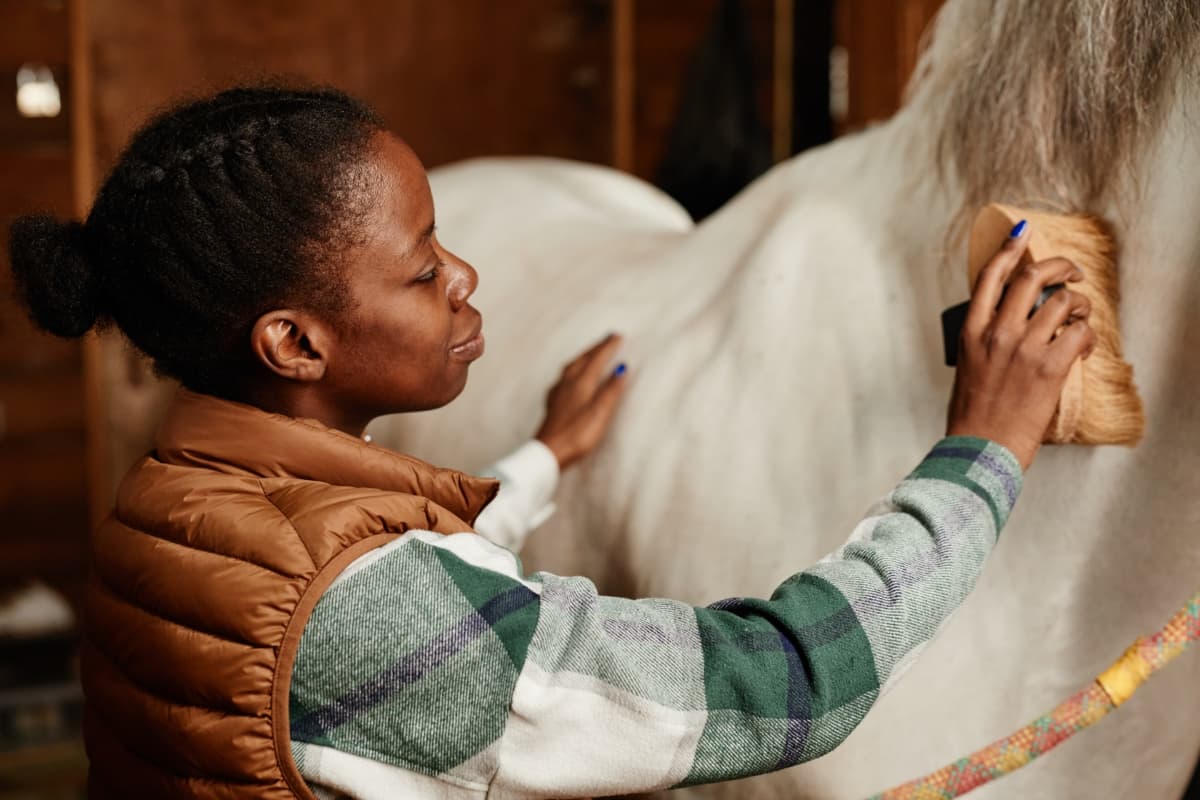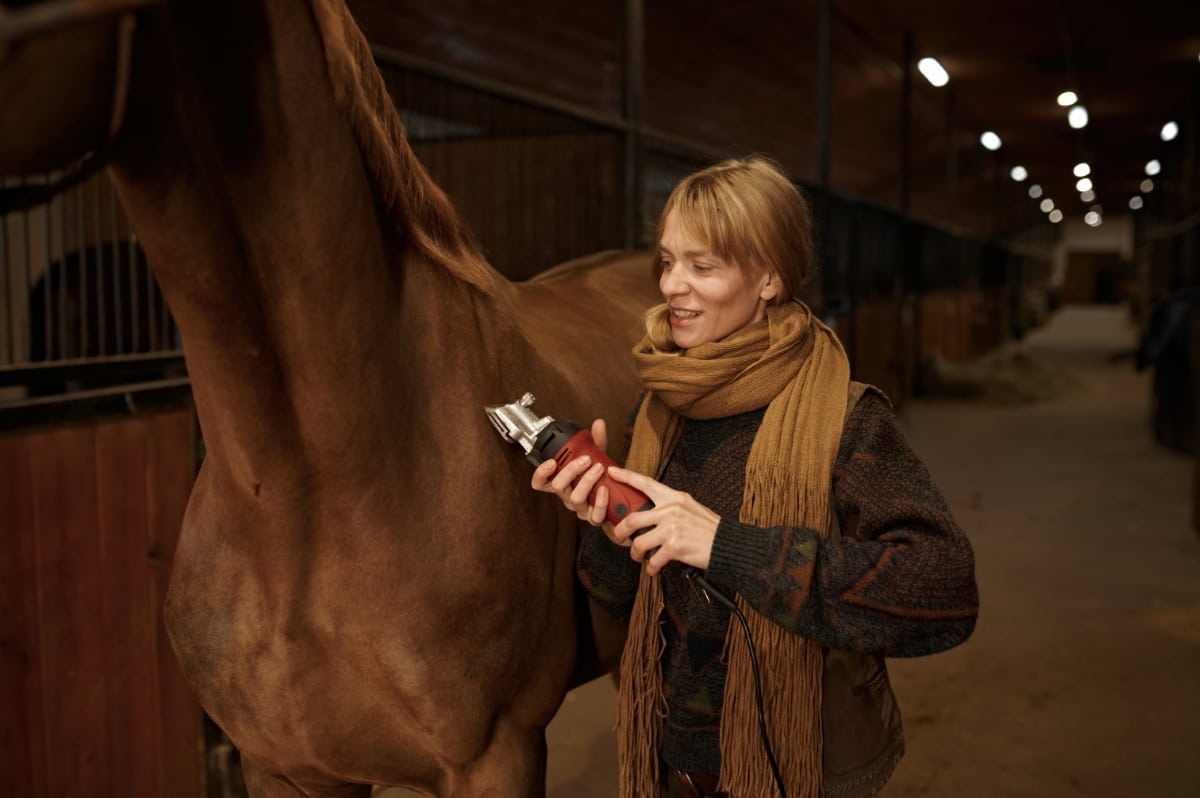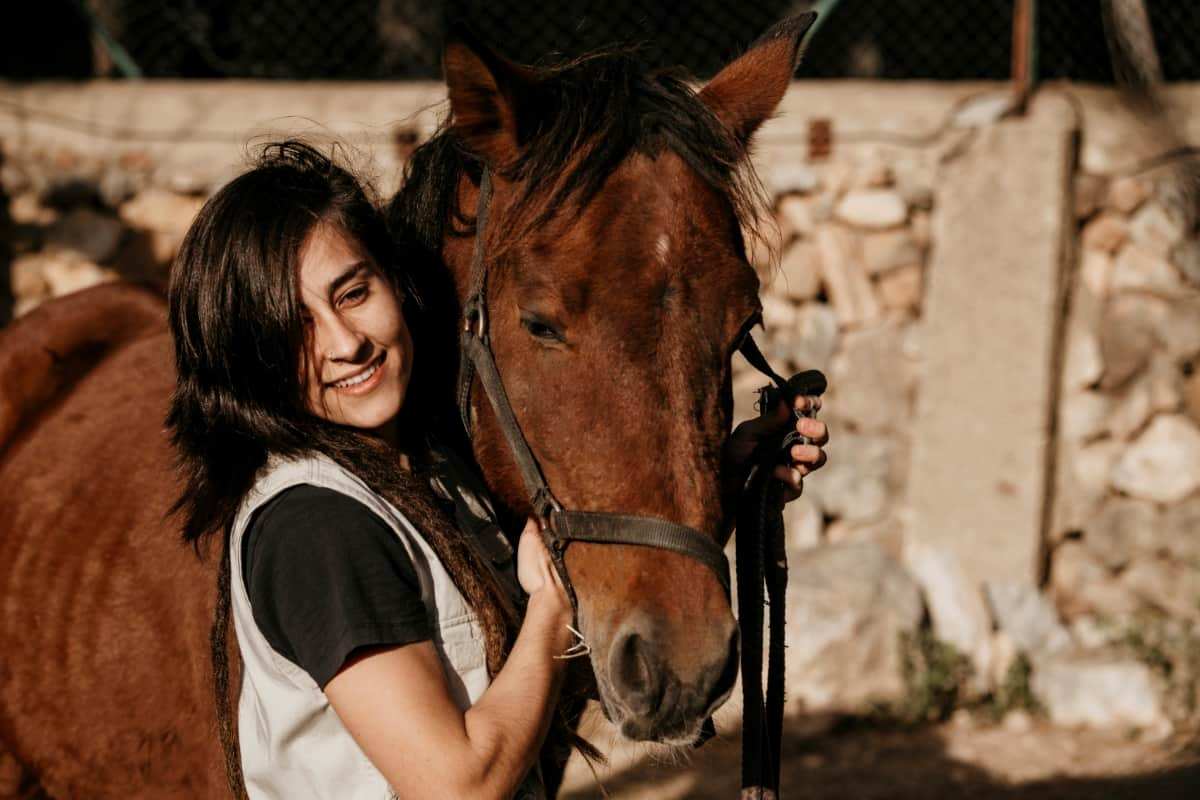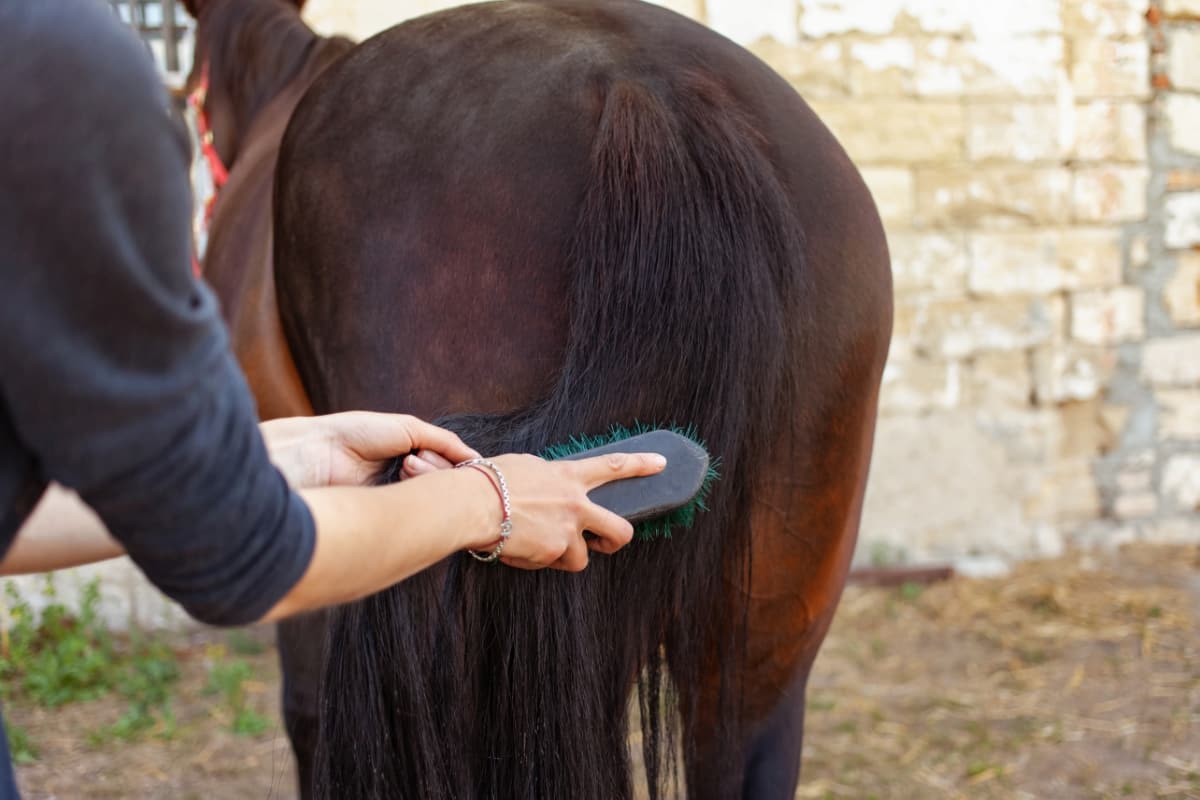Horse grooming is not merely an aesthetic practice but a cornerstone of horse health and well-being. At its core, horse grooming is about cleaning and checking your horse for signs of health issues. It’s also called equine grooming, and it involves various techniques and tools to keep the horse’s coat, hooves, mane, and tail clean and healthy. Engaging in regular grooming allows the owner or caretaker to establish a bond with the horse, ensuring it is comfortable and familiar with human touch.

It’s also an opportunity to check for injuries, irritation, or signs of illness hidden beneath the coat. The tools grooming a horse range from brushes and combs to hoof picks, each serving a unique purpose. When learning to groom a horse for a show, one must be meticulous and thorough to ensure the horse looks its best, reflecting a high standard of care and presentation.
Everything You Need to Know About Horse Grooming
Essential Tools and Equipment for Horse Grooming: A Comprehensive Guide
Brushes are central to the grooming process, with different types of horse grooming brushes serving various functions. A curry comb helps loosen dirt and debris from the horse’s coat, while body brushes remove this loosened dirt and smooth the coat. Mane and tail brushes help untangle knots, keeping these areas clean and manageable.
Hoof picks remove stones, dirt, and other debris from the horse’s hooves, preventing discomfort or infection. Other items like sponges, towels, and a hoof conditioner may also be included in the grooming kit to ensure that the horse is well cared for and presented at its best, especially when preparing for a show.
Preparing the Grooming Area: Creating a Safe and Comfortable Environment for Your Horse
Before you start the grooming process, it’s crucial to ensure that the area where you will be grooming the horse is safe and comfortable. The area needs to be tidy, bright, and safe without dangerous things like sharp objects or slippery surfaces. It should be spacious enough to move around the horse easily. All necessary grooming horse tools should be easily accessible, organized, and clean, ready for use.
Step 1: Properly Tying and Securing Your Horse for Grooming
Ensuring your horse is securely and comfortably tied is a critical initial step in the grooming process. The horse should be tied at a height level with its withers and allowed enough rope to hold its head comfortably. The tying spot should be sturdy and stable, ensuring that the horse doesn’t break free or get injured during the grooming process. This step ensures that the horse remains in a fixed position, making the grooming process easier and safer for both the horse and the person grooming. A quick-release knot is recommended for tying, as it allows easy and rapid freeing of the horse if necessary.
Step 2: Brushing and Cleaning the Horse’s Coat: Techniques and Best Practices
Brushing and cleaning the horse’s coat is a fundamental aspect of horse grooming. Begin with a curry comb, moving in circular motions to loosen dirt and dead hair. Next, use a body brush to remove the loosened dirt, ensuring the coat is clean and smooth. Long strokes work best when using the body brush, following the direction of the hair growth. The horse’s face should be cleaned with a softer brush to ensure that sensitive areas are not harmed.
In case you missed it: 10 Best Beef Cattle Breeds in the United States with Prices

Step 3: Mane and Tail Care: Trimming, Detangling, and Maintenance Tips
Mane and tail care are essential components in horse grooming, vital for maintaining the horse’s overall appearance and health. Begin by detangling the mane and tail using a specialized brush or comb, gently working through any knots or tangles to prevent hair breaking. It might be helpful to use detangling sprays to make this process easier.
Trimming is also an important aspect, helping to manage the length and remove any damaged or split ends. When trimming, ensure you follow the natural contours of the horse’s neck and hindquarters to maintain a natural and neat appearance. Regular maintenance, such as brushing and occasional trimming, ensures that the mane and tail remain healthy, clean, and manageable, enhancing the overall grooming process and presentation, which is especially important when preparing a horse for a show.
Step 4: Cleaning and Caring for the Horse’s Hooves: A Detailed Approach
Hooves are a critical part of a horse’s anatomy, requiring careful attention and cleaning. Begin by using a hoof pick to carefully clean out the horse’s hooves, removing any rocks, dirt, or stuff stuck in there. Be gentle to keep the horse comfortable and safe from harm. Examine the hooves for any signs of cracks, thrush, or other issues that might need professional attention.
Regular cleaning helps prevent infections and promotes the overall health of the hooves. After cleaning, you might consider using a hoof conditioner to maintain moisture levels and improve hoof quality. This step is essential in horse grooming, ensuring that the horse can stand, walk, and run comfortably, contributing to its overall well-being and performance in shows.
Step 5: Facial Grooming: Cleaning the Eyes, Ears, and Muzzle
Facial grooming is a delicate part of the grooming process, requiring a gentle touch and attention to detail. Begin by cleaning the horse’s eyes, gently wiping away any dust or discharge with a soft, damp cloth, being careful not to irritate the eyes. The ears should be cleaned with utmost gentleness, removing dirt without probing too deeply, which could cause discomfort or harm. A soft brush or cloth is ideal for this purpose.
In case you missed it: SBI Dairy Loan in India: Explained in 10 Steps for Eligibility to Sanctioning

The muzzle, too, requires cleaning, wiping away any food or dirt, and ensuring it’s clean and comfortable. Regular facial grooming helps prevent infections and discomfort, contributing to the horse’s overall appearance and comfort, which is crucial when grooming a horse for a show.
Step 6: Bathing Your Horse: Tips for a Thorough and Safe Cleaning Process
Bathing is a significant step in horse grooming, especially in preparation for shows, where the horse’s appearance is paramount. Ensure the water temperature is comfortable for the horse, and use horse-specific shampoos and conditioners. Begin by wetting the horse, then applying the shampoo, working it into a lather, and ensuring that all parts of the body are cleaned.
Rinse thoroughly, ensuring no soap residue remains, as it could irritate. Pay attention to the mane and tail, ensuring they are well-cleaned and rinsed. When the bath is complete, dry the horse with a suitable towel or let it air dry, ensuring it doesn’t get cold. Bathing helps remove deep-seated dirt, promoting a clean and shiny coat and enhancing the horse’s appearance and comfort during shows.
Frequently Asked Questions (FAQ) on Horse Grooming
What Should I Be Aware of When Grooming My Horse?
Be aware of the horse’s comfort and mood during grooming, ensuring the experience is calm and stress-free. Always check the horse’s body for any signs of injuries, irritation, or unusual lumps during the grooming process.
Where Do I Start Grooming My Horse?
Begin grooming your horse from the top, gradually moving downwards, usually starting with the neck and shoulders. It’s crucial to follow a systematic approach, ensuring no part of the horse’s body is overlooked during the grooming process.
What Do I Need in My Horse Grooming Kit?
Your horse grooming kit should include essential items such as various brushes, a hoof pick, mane and tail combs, and grooming cloths. It’s also beneficial to have shampoo, conditioner, and detangling sprays for comprehensive grooming sessions.
In case you missed it: How to Start Horse Farming in 10 Steps: Business Plan, Management, and Care

Conclusion
Horse grooming is a meticulous process that ensures the overall health, cleanliness, and well-being of the horse. It requires a thorough approach, utilizing specific tools and techniques, to maintain the horse’s appearance, especially when preparing for shows.
- Feed Your Flock for Less: Top 10 Tips to Save on Chicken Feed
- Ultimate Guide to Ossabaw Island Hog: Breeding, Raising, Diet, and Care
- Hatching Answers: The Top 10 Reasons Your Chickens Aren’t Laying Eggs
- Eggs and Economics: Breaking Down the Cost of Raising Backyard Chickens
- Defend Your Greens: Proven Methods to Keep Iguanas Out of Your Garden
- Ultimate Guide to Cinnamon Queen Chicken: A Comprehensive Guide for Beginners
- Ultimate Guide to California Tan Chicken: Breeding, Raising, Diet, Egg-Production and Care
- Ultimate Guide to Marsh Daisy Chicken: Breeding, Raising, Diet, and Care
- 10 Types of Chicken Farming Businesses You Can Start for Profits